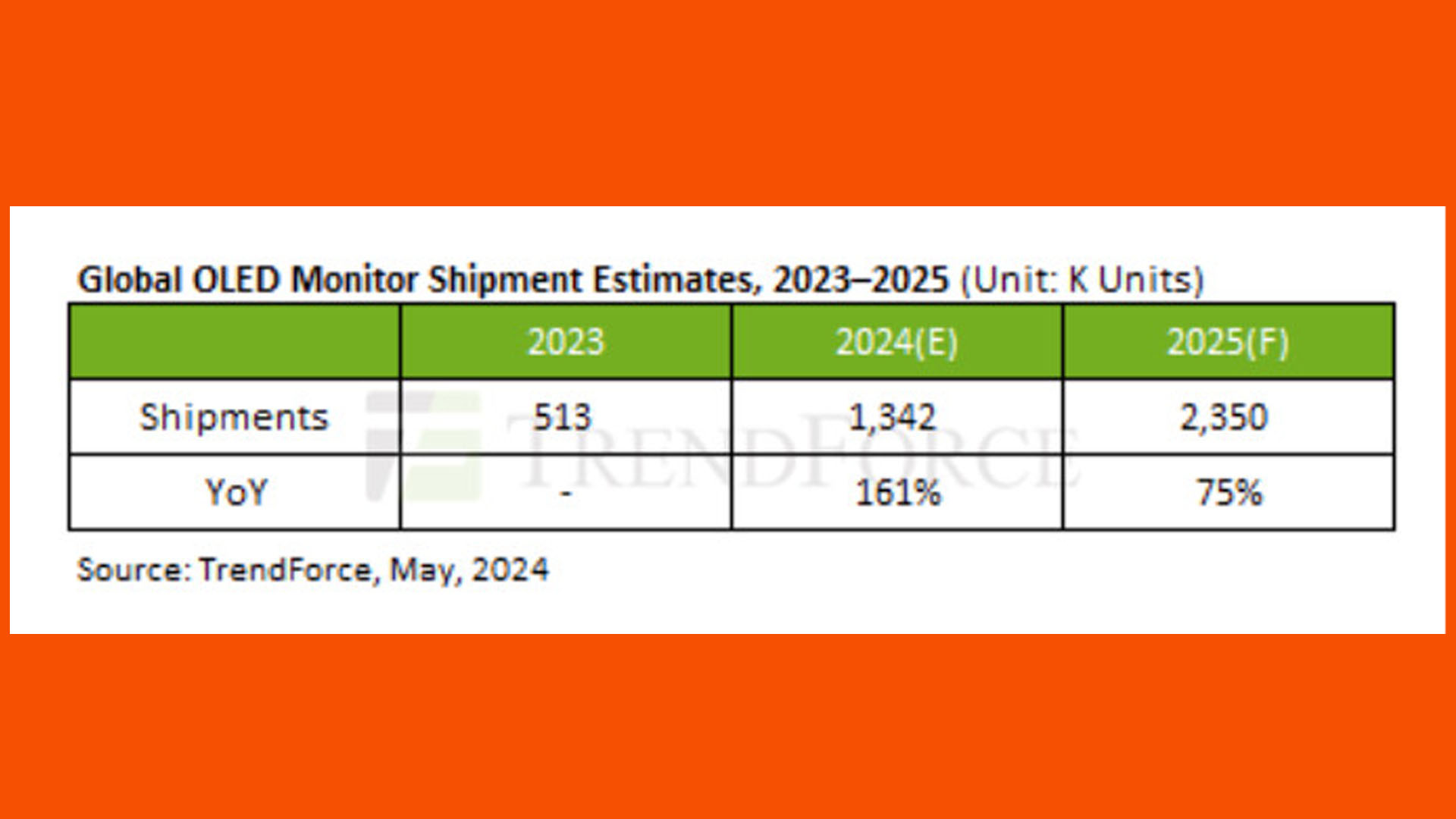OLED gaming monitor sales have exploded this year, according to a new report. Shipments have already hit 200,000 units, up 121% from the same period last year, making it clear that OLED gaming monitors are becoming a go-to choice for premium gaming screens.
This tallies with our tests, with several of the entrants on our best gaming monitor guide now being OLED models. In particular, displays based on Samsung QD-OLED technology are leading the charge but LG’s competing WOLED tech is also proving popular.

A key part of the reason for this popularity is the increasing affordability of these displays, with Samsung’s 49-inch options offering remarkably good value. Even though it’s based on last year’s QD-OLED panel tech, the still-excellent Samsung G95SC offers a massive screen size and loads of features while costing “only” $1,100.

Also bolstering opinion of the tech is a steady wave of evidence that, while burn-in is still a major concern for OLED gaming monitors, the latest panels are reasonably robust. In a recent video from Monitors Unboxed, Tim Scheisser discussed his experience running an older OLED panel for the last two years, with it only exhibiting the slightest hint of burn-in problems during that time.

As well as showing already impressive sales so far this year, the sales report that comes from TrendForce (via TechPowerUp) predicts that total OLED gaming monitor sales for the year will hit 1.34 million units. That would be a 161% increase over last year.
In terms of the split of those sales, Samsung is leading the way so far with a 36% market share, while Dell (which uses panels from a range of suppliers, including LG and Samsung) comes in second with 21%, and LG is next with 19%.

LG had been leading the way on OLED, having some of the first viable OLED gaming monitors on the market, such as the LG 27GR95QE. However, its WOLED panel technology has proved less popular than Samsung’s QD-OLED tech, as it’s not as sharp, and it has lower brightness for colors other than white.
That’s because it uses four sub-pixels consisting of white, red, green, and blue (with the white boosting white brightness), rather than the usual trio of red, green, and blue. Samsung’s QD-OLED tech, though, uses quantum dots to boost the brightness of all three sub-pixel colors.
The upshot is that while in the long run, availability is sure to increase and prices are sure to go down for OLED gaming monitors, the current boom in popularity could mean we see a bit of a run on these panels, especially in the build up to the holiday season. That’s why now is just the right time to buy, with the likes of the MSI MPG 271QRX being an excellent choice for those wanting a blazing-fast 360Hz display.
